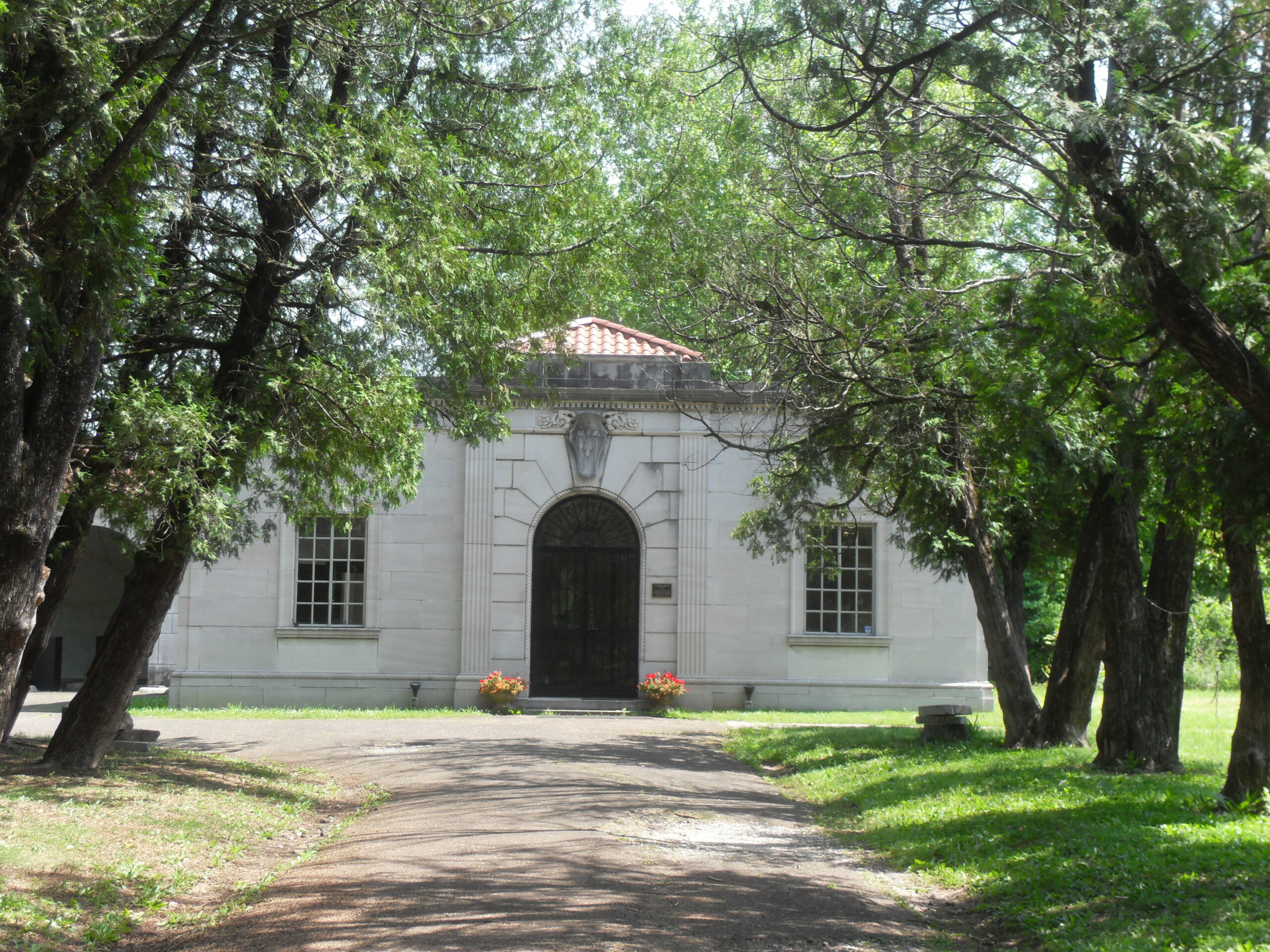One of South Knoxville’s most historic attractions sits on a quiet lot at the intersection of Maryville Pike and Candora Avenue. It’s the Candoro Marble building, which today houses a gallery and five artist studios operated by Tri-Star Arts.
Originally, the building served as the office and showroom for the Candoro Marble Co., which was founded in 1914. The name was created by taking the first letter(s) from the surnames of the founders: John J. Craig III, F.C. Anderson, W.J. Donaldson and S.A. Rodgers.
Tennessee marble was refined and sculpted at Candoro and used in noteworthy buildings in the city and throughout the country until the business closed in 1982. The building sat empty for many years.
Eventually, Bruce Bennett Custom Marble & Design rented the space from owner David Witherspoon and used it as its base. Trudy Miller Monaco, a Florida transplant, began working for Bennett and fell in love with the building and its history.
“The building was beautiful, but it was falling apart,” says Monaco, who was the manager and a designer for Bennett. She rented a house just up the hill on Cherokee Trail, and one day as she was searching for her lost dog she ended up exploring a big chunk of Vestal in between her home and her work.
She realized there was a lot of poverty in those streets, but she also knew that many families had strong connections to Candoro Marble through relatives who had worked there. She “wanted to give them something to be proud of in the neighborhood,” and she decided to create an organization that would renovate and maintain the building.

Sharon Davis, then-president of the Candoro Arts & Heritage Center, presents a special plaque to Trudy Monaco, CAHC founder, in this December 2015 file photo.
She began laying the groundwork for the Candoro Arts & Heritage Center in fall 2000, forming a board and getting her first donation, $100, from South Knoxville notable Howard Pinkston when she stopped to visit him at his used-car lot. She used that money to apply for a 501(c)(3) designation and to start a Candoro bank account.
Monaco, the first president and executive director, was inspired by Atlanta’s Piedmont Arts Festival to envision a similar event for Candoro. On Mother’s Day weekend 2001, the board hosted Vestival, a music and arts festival, on the Candoro grounds. The money they made went into the upkeep of the building and making repairs.
Each year, Vestival grew, and the potential for improving the building expanded. The key to their success, Monaco says, was board member Charlie Richmond, who was an architect.
“He was a major force in the restoration,” Monaco says of Richmond, who died in 2013. “He oversaw all the work and managed the restoration projects on a volunteer basis.”
Under Richmond’s guidance, they replaced the roof and part of the flooring, installed a bathroom (finally!) and a heating and cooling system, and turned Candoro into a showplace again.
The only project the CAHC didn’t tackle was refurbishing the windows. Monaco says they couldn’t decide on the best approach for the complicated task. Candoro was added to the National Register of Historic Places on July 22, 2005, thanks to the efforts of the CAHC.
The Aslan Foundation bought the building in 2014 and continued to let Candoro Arts & Heritage Center use it and hold Vestival there until the foundation closed the building to make extensive repairs.
Monaco thinks Candoro is still important to the people of Vestal because of its legacy of hard work and beauty combined.
“All those years it sat empty, it wasn’t vandalized as so many old buildings are,” she says. “They took care of it.”
Betsy Pickle is a freelance writer and editor who particularly enjoys spotlighting South Knoxville.
Editor’s note: A previous version of this story incorrectly listed 1996 as the year Candoro was added to the National Register of Historic Places. July 22, 2005, is the correct date.

